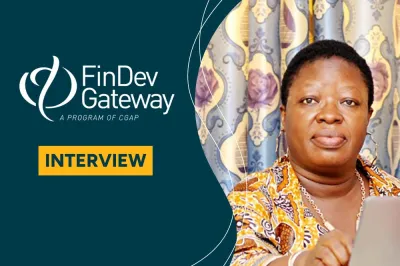How to Invest With a Gender Lens

There is a noticeably growing interest in gender lens investing (GLI) from both impact and mainstream investors. GLI is an investment approach which aims to advance gender equality by taking into account gender-based factors across the investment process.
For the financial inclusion sector, assessing gender equality and women’s empowerment has been at the heart of investment strategies for decades. Yet traditional indicators for measuring the gender profile of MFIs, such as simply counting the number of female clients, are not sufficient and in some cases can even lead to unintended consequences, such as pushing additional debt burden on women.
In this blog post, we share four insights on how to refine the gender lens in the investment process to create meaningful and scalable investment strategies for women.
1) Aim high: The 2X Challenge is a milestone, not an endpoint
The 2018 G7 Summit produced a key initiative for gender lens investing: the 2X Challenge, which seeks to mobilize capital for gender-oriented investments from development finance institutions and other private sector investors. Along with more than 40 other organizations, Incofin IM responded to this call and recently joined the 2X Collaborative, the global body of the GLI industry stemming from the 2X Challenge.
The 2X Challenge has paved the way for more unified gender approaches and enhanced transparency by developing a standard set of clear and monitorable criteria which determine whether an investment is eligible to be counted towards the 2X Challenge. The 2X criteria have allowed asset managers such as Incofin to benchmark their funds around the following key dimensions, with thresholds defined by sector:
- Entrepreneurship: 51 percent women ownership or the business founded by a woman.
- Leadership: 30 percent women in senior leadership or 30 percent women on the Board or Investment Committee.
- Employment: 30 to 50 percent share of women in the workforce (depending on sector) and one “quality” indicator (e.g., policy or program) beyond those required for compliance, addressing barriers to women’s quality of employment.
- Consumption: Product(s) or service(s) that specifically or disproportionately benefit women.
- Investments through financial intermediaries: 30 percent of the loan proceeds or portfolio companies meet the 2X criteria.
Despite the wide acceptance of the 2X Challenge and the merits of these criteria, there is still little alignment on how the gender lens should be applied in practice to help advance progress towards gender equality, and not just measure it. For instance, 91 percent of the partner financial institutions Incofin IM works with today already meet at least one of the 2X Challenge criteria. Does this mean that we should be satisfied with these results? Certainly not! Having women clients does not necessarily mean that their needs are actually being met. Having one additional female board member does not necessarily mean that women’s voices are truly heard more. We need to go beyond the mere measurements to understand the intentionality behind these indicators and the processes put in place to contribute to continued progress in gender equality.
2) Context is everything
We must first understand that there is no blanket approach. Gender norms are deeply embedded in society and local culture and vary widely from one country or region to the next. It is therefore nearly impossible to develop an approach that would work across the investment spectrum and in all regions and countries. Investment action plans and target indicators must be tailor-made to work with the societal norms as they exist and evolve in the area where they operate.
3) Engage and use your influence as impact investor
Only based on a deep understanding of the social, cultural and regulatory gender context, can we engage in constructive dialogue with our partner financial institutions about their challenges and ambitions towards progress in gender equality. To that end, gender scorecards are useful and effective tools to initiate the conversation.
Scorecards typically include detailed performance criteria on gender equality, such as women’s workforce participation, gender diverse leadership and governance, pay gap, glass ceiling, gender-responsive HR policies, gender-responsive financial and non-financial products, dedicated customer surveys and women-powered value chains. Each criterion gets a baseline score based on the results of the due diligence. Then, the partner defines their target score for each dimension, reflecting their gender equality ambition. These ambitions are then formalized into achievable and measurable commitments and concrete action plans which can be tracked over time.
The development of scorecards is one way that impact investors can push investees towards greater gender equality. They can also exert their influence through:
- Expert, honest dialogues with senior management and the board of directors.
- Dissemination of best practices and business cases.
- Inserting action plans in investment agreements on the promotion of gender equality or use of proceeds.
- Impact-based pricing incentives linked to gender indicators or milestones.
- Gender-focused technical assistance programs.
4) Have a hard look in the mirror
Finally, . For impact investors that promote equal opportunities for women, diversity and inclusivity should become fundamental governing principles, disseminated through policy and corporate culture.
As impact managers, we believe that it is our responsibility to train our teams on how to identify gender challenges and opportunities, including unconscious gender bias, and to integrate this analysis in our processes of origination, due diligence and monitoring. Such integration is key to achieving meaningful management of financial, social and gender outcomes, and needs to be directed inwards as well as outwards.
*****
Gender factors should be deliberately integrated in all stages of the investment and decision-making processes. At Incofin, we believe that developing a structured and comprehensive approach to GLI involving all stakeholders is critical to lead to long-lasting societal changes and tangible results.


